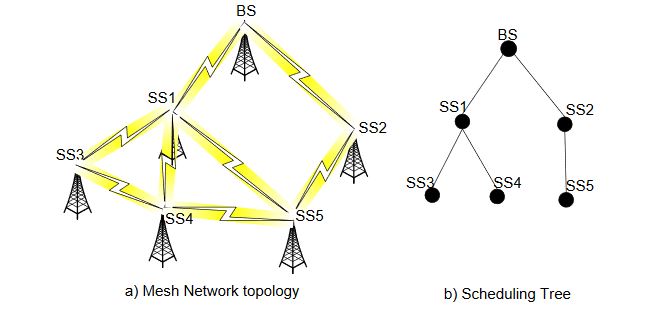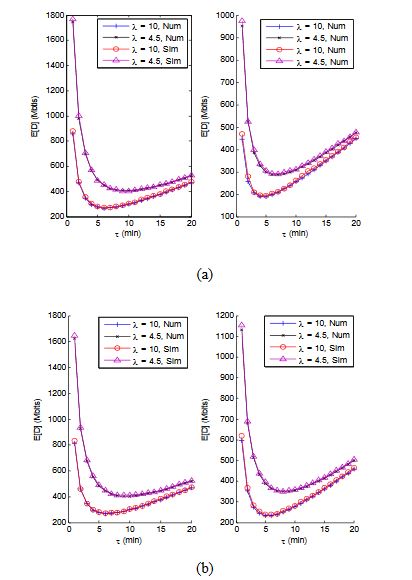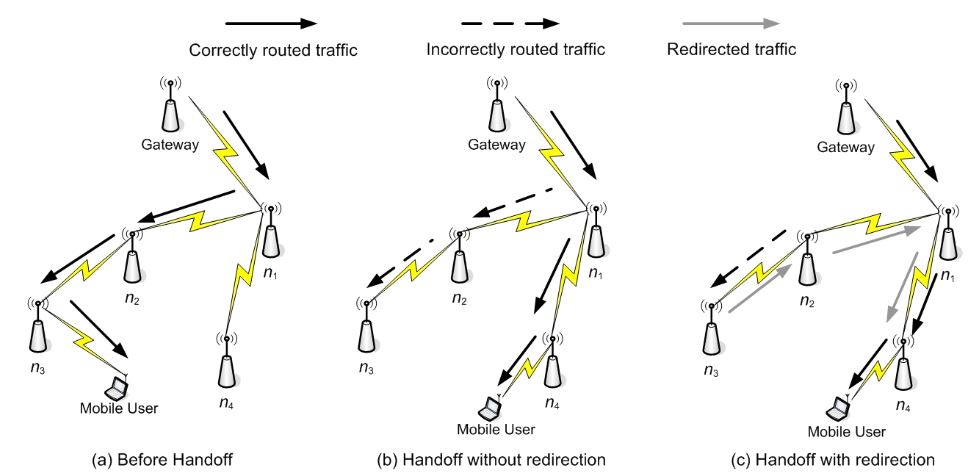ABSTRACT
The rapid advances in networking technology have enabled large-scale deployments of online video streaming services in today’s Internet. In particular, wireless Internet access technology has been one of the most transforming and empowering technologies in recent years. We have witnessed a dramatic increase in the number of mobile users who access on line video services through wireless access networks, such as wireless mesh networks and 3G cellular networks.
Unlike in wired environment, using a dedicated stream for each video service request is very expensive for wireless networks. This simple strategy also has limited scalability when popular content is demanded by a large number of users. It is desirable to have a robust wireless access environment that can sustain a sudden spurt of interest for certain videos due to, say a current event.
Moreover, due to the mobility of the video users, smooth streaming performance during the handoff is a key requirement to the robustness of the wireless access networks for mobile video users. In this dissertation, the author focuses on the robustness of the wireless mesh access (WMA) environment for mobile video users. Novel video sharing techniques are proposed to reduce the burden of video streaming in different WMA environments. The author proposes a cross-layer framework for scalable Video-on-Demand (VOD) service in multi-hop WiMax mesh networks.
The author also studies the optimization problems for video multicast in a general wireless mesh networks. The WMA environment is modeled as a connected graph with a video source in one of the nodes and the video requests randomly generated from other nodes in the graph. The optimal video multicast problem in such environment is formulated as two sub-problems. The proposed solutions of the sub-problems are justified using simulation and numerical study. In the case of online video streaming, online video server does not cooperate with the access networks.
In this case, the centralized data sharing technique fails since they assume the cooperation between the video server and the network. To tackle this problem, a novel distributed video sharing technique called Dynamic Stream Merging (DSM) is proposed. DSM improves the robustness of the WMA environment without the cooperation from the online video server. It optimizes the per link sharing performance with small time complexity and message complexity. The performance of DSM has been studied using simulations in Network Simulator 2 (NS2) as well as real experiments in a wireless mesh testbed.
The Mobile YouTube website (http://m.youtube.com) is used as the online video website in the experiment. Last but not the least; a cross-layer scheme is proposed to avoid the degradation on the video quality during the handoff in the WMA environment. Novel video quality related triggers and the routing metrics at the mesh routers are utilized in the handoff decision making process. A redirection scheme is also proposed to eliminate packet loss caused by the handoff.
RELATED WORKS
A video server typically can sustain only a very limited number of concurrent video streams. This problem, known as server or network–I/O bottleneck, limits the scalability of video services. Several periodic broadcast schemes have been proposed to address this problem. In this approach, a video is fragmented into a number of segments, each periodically broadcast on a dedicated channel. It is up to the client software to tune to these channels to pick up the required segments just in time for the video playback.
VOD IN WIMAX-BASED WMA

Figure 2. An example of WiMax WMN and its scheduling tree
A new node search es for active networks by listening to MSH-NCFG messages. From all the possible neighboring nodes that advertise MSH-NCFG messages, the new node chooses one as its sponsor node. Then the new node sends a Mesh Network Entry (MSH-NENT) message with registration information to the mesh BS through its sponsor node. Upon receiving the registration message, the mesh BS adds the new node as the child of the sponsor node and then broadcasts the updated network configuration to all the SSs in the network. Figure 2 depicts a WiMax-based WMN and the corresponding scheduling tree.

Figure 5. Illustration of using physical layer multicast
Figure 5 illustrates a more complex example of using physical layer multicast. Assume SS5 joins a multicast group that involves SS4. In this case, even SS4 and SS5 are not children of SS1, because they get the stream from SS2 and SS3 respectively, SS1 can still multicast the video stream to its children, which are SS2 and SS3.
OPTIMIZING PATHCING IN WMA
![Figure 16. Result of a simple numerial study of E[D]](http://cse.final-year-projects.in/wp-content/uploads/2018/02/p-03261-A-Robust-Wireless-Mesh-Access-Environment-3.jpg)
Figure 16. Result of a simple numerial study of E[D]

Figure 19. Results form 4 random graph with 50 nodes
The optimal patching window sizes under different topologies and same other settings are different. This indicates that topology is relevant to the optimization goal. This observation also validates that the optimization framework in this work is different from the framework of prior works. Prior work will output the same value of the optimal patching window size with different topologies, since they do not include the data transmission requirement in the network in the formula of the optimization goal.
DYNAMIC STREAM MERGING

Figure 20. Illustration of the testing WMA environment
To better evaluate the proposed technique, we built an 802.11g-based wireless mesh access network in our department building, using netbook computers as the mesh nodes. Without loss of generality, we choose the mobile YouTube site as the Internet VOD resource, and successfully demonstrate the sharing of YouTube video streams in our mesh network. An illustration of our WMA environment is given in Figure 20.

Figure 24. Example of packet forwarding using M-tree
Data forwarding at each mesh node is performed according to its oM-trees as follows. Only the streams indicated in the root nodes of the oM-trees need to be forwarded. An example is illustrated in Figure 24. As shown in Figure 24(a), N1 has three incoming streams S1, S2 and S3 from three different upstream nodes. These three streams share the same next hop, N2.
HANDOFF FOR VIDEO STREAMING

Figure 37. Example of traffic redirection during handoff
An example of the proposed redirection scheme is illustrated in Figure 37. In Figure 37 (a), a mobile user associates to mesh router n3. The video stream is from the gateway and traverses mesh router n1, n2, and n3 before it reaches the mobile user. The topology in the figure indicates that n3 and n4 need to communicate with each other through n1, n2. Suppose the mobile user switches from n1 to n4, and the link state routing is adopted in the networks.
CONCLUDING REMARKS
In this dissertation, we propose protocols and theoretical insights that lead to a robust wireless mesh access (WMA) environment for mobile video users. The video sharing methodology has been employed throughout this dissertation to help the access network sustain a sudden spurt of requests on popular video in peak time. By considering together channel scheduling, admission control, as well as multicast routing in the WiMax-based WMA environment, we have shown that the cross layer framework can be leveraged to achieve reliable and scalable video-on-demand services in the access networks.
Theoretical models have been proposed to formulate the video multicast problem in a general wireless mesh networks. Based on these models, we have proposed algorithms towards to the optimal performance of the Patching-based video multicast in WMA environment. Practical issues are also examined in this work. We propose a Dynamic Stream Merging (DSM) technique to enable sharing of wireless resources without the cooperation from the online video server. As a light-weighted distributed technique, DSM maximizes the per link video sharing performance with small time complexity and message complexity.
We implement DSM under Linux system and validate its efficiency in a wireless mesh testbed. We also study the handoff issue for mobile video user and propose a novel QoS oriented handoff technique. We point out that the quality of the video as well as the routing information associate with the mesh router are overlooked in existing handoff technique. Our cross-layer handoff takes the video frame loss ratio, the routing metrics of the mesh routers, and the link quality to each mesh router into account. A novel redirection scheme is also employed to avoid the data loss in continuous video stream during the handoff.
Source: University of Central Florida
Author: Fei Xie